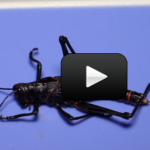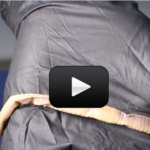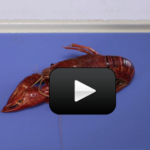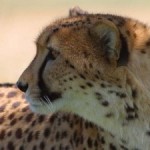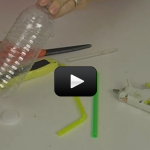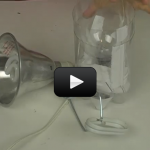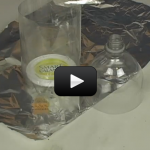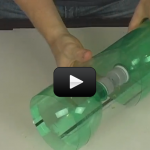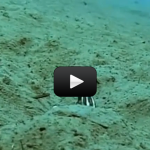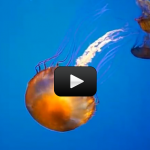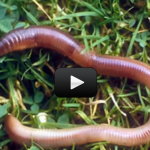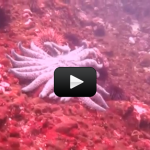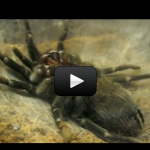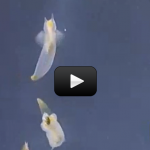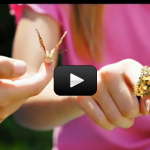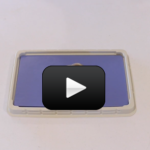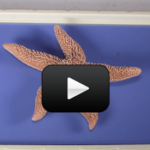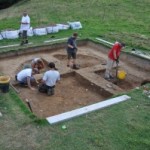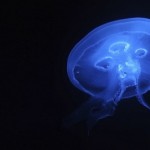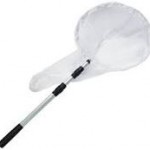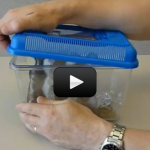Grasshopper Dissection
Dissection in biology provides a hands-on education above and beyond reading a textbook. By seeing, touching and exploring different organs, muscles and tissues inside an animal and seeing how they work together allows you to really understand your own body and appreciate the amazing world around us. And it's not hard - you can dissect a … Continue reading "Grasshopper Dissection" |
Earthworm Dissection
Dissection in biology provides a hands-on education above and beyond reading a textbook. By seeing, touching and exploring different organs, muscles and tissues inside an animal and seeing how they work together allows you to really understand your own body and appreciate the amazing world around us. And it's not hard - you can dissect a … Continue reading "Earthworm Dissection" |
Crayfish Dissection
Dissection in biology provides a hands-on education above and beyond reading a textbook. By seeing, touching and exploring different organs, muscles and tissues inside an animal and seeing how they work together allows you to really understand your own body and appreciate the amazing world around us. And it’s not hard – you can dissect … Continue reading "Crayfish Dissection" |
Classifying Organisms using Little Boxes
Imagine a little box of spoons. Now, imagine on moving day that that box of spoons is put into a bigger box with all of the silverware. Now, imagine that that box of silverware is placed into an even bigger box with all of the kitchen stuff. Now, imagine that the box of kitchen stuff … Continue reading "Classifying Organisms using Little Boxes" |
Make an Insect Aspirator
Some insects are just too small! Even if we try to carefully pick them up with forceps, they either escape or are crushed. What to do? Answer: Make an insect aspirator! An insect aspirator is a simple tool scientists use to collect bugs and insects that are too small to be picked up manually. Basically … Continue reading "Make an Insect Aspirator" |
Berlese funnel
Unsurprisingly, often the most interesting critters found in soil are the hardest to find! They’re small, fast, and used to avoiding things that search for them. So, how do we find and study these tiny insects? With a Berlese Funnel (Also called the Tullgren funnel)! |
Predator-Prey: Who Eats Whom?
The way animals and plants behave is so complicated because it not only depends on climate, water availability, competition for resources, nutrients available, and disease presence but also having the patience and ability to study them close-up. We’re going to build an eco-system where you’ll farm prey stock for the predators so you’ll be able … Continue reading "Predator-Prey: Who Eats Whom?" |
Eco-Column
What grows in the corner of your windowsill? In the cracks in the sidewalk? Under the front steps? In the gutter at the bottom of the driveway? Specifically, how doe these animals build their homes and how much space do they need? What do they eat? Where do fish get their food? How do ants … Continue reading "Eco-Column" |
Amazing Octopi
I have to admit, one of my all-time favorite animals is the octopus. It’s not only an invertebrate, but amazingly intelligent and can be poisonous (like the blue-ring Octopus shown here) or not. The octopus is an animal because it’s multi-cellular (more than one cell, so amoeba and protists are not animals), it’s moveable (not … Continue reading "Amazing Octopi" |
Sponges and Cnidarians
Invertebrates are organisms without backbones. Let’s look at two very simple types of invertebrates; Sponges and Cnidarians. Sponges (Phylum Porifera), found in oceans all over the world, are made up of colonies of specialized cells—some help push water through the sponge, some help it feed, some are responsible for reproduction, etc. They feed by filtering … Continue reading "Sponges and Cnidarians" |
Worms!
Here we’re going to discuss the differences between three types of worms; flatworms, roundworms, and segmented worms. The word “worm” is not, in fact, a scientific name. It’s an informal way of classifying animals with long bodies and no appendages (no including snakes). They are bilaterally symmetrical (the right and left sides mirror each other). … Continue reading "Worms!" |
Echinoderms
Echinoderms, meaning “spiny skin”, are radial symmetric marine animals. They are found at all depths—both shallow and deep water. They play important roles in their ecosystems. Despite appearances, they do not have skeletons. The “spiny skin” is, in fact, skin covering a spiny endoskeleton (internal skeleton). How do echinoderms move? How do they feed themselves? … Continue reading "Echinoderms" |
Arthropods
Arthropods, organisms in the phylum arthropoda, are organisms with segmented bodies and appendages on at least one segment. They use these appendages for defense, feeding, sensory perception, and locomotion. We usually see them everyday: fly on the wall, or perhaps moth by the light. The phylum is incredibly divers and the organisms within it have … Continue reading "Arthropods" |
Sea Angel: Is it real?
Sea angels used to be known as a pteropod (small swimming sea slugs), but now are recognized as pelagic marine opisthobranch gastropod molluscs. Sea angels, also called cliones, live all over the world, both in polar and equatorial seas. Sea butterflies are similar to sea angels, but they also have a shell. Some sea angels … Continue reading "Sea Angel: Is it real?" |
Butterfly Life Cycle
Insects are not only the most diverse subgroup of arthropods, but with over a million discovered species it is the most diverse group of animals on earth. Although they can’t all be as beautiful as a butterfly, they all play important roles in their ecosystems—just think of where we would be without bees! The segmented … Continue reading "Butterfly Life Cycle" |
Dissecting a Clam
Dissection in biology provides a hands-on education above and beyond reading a textbook. By seeing, touching and exploring different organs, muscles and tissues inside an animal and seeing how they work together allows you to really understand your own body and appreciate the amazing world around us. And it's not hard - you can dissect a … Continue reading "Dissecting a Clam" |
Starfish Dissection
Dissection in biology provides a hands-on education above and beyond reading a textbook. By seeing, touching and exploring different organs, muscles and tissues inside an animal and seeing how they work together allows you to really understand your own body and appreciate the amazing world around us. And it’s not hard – you can dissect … Continue reading "Starfish Dissection" |
Make a Quadrant
Quadrants are an archeologist’s best friend. Basically, they’re large, wooden frames scientists—especially archeologists—use to keep track of exactly where they find things during a dig. A “dig” is what archeologists call the process of uncovering artifacts. You can also use this tool in the backyard when investigating a field of bugs, insects, and other invertebrates! … Continue reading "Make a Quadrant" |
Glowing Worms
Some animals glow under ultraviolet light. Jellyfish are a prime example of these glowing animals. Under normal conditions, worms do not glow. However, scientists have been able to genetically alter some worms so that they will glow under an ultraviolet light. To do this, scientists engage in genetic engineering. They inject the gene that makes … Continue reading "Glowing Worms" |
Biological Nets
A biological net is one of the essential tools of a field biology researcher — you! A bio-net allows you to safely and gently gather samples. Whether you’re studying butterflies or tadpoles a bio-net is the tool to have! Important safety note: Do both of these with parental supervision. Many of the steps are tricky … Continue reading "Biological Nets" |
Raising Orange Spotted Roaches
When you hear “roach” you might not immediately think of something that would make a good pet, but not all roaches are like the cockroaches you might have seen in your house! Species such as the Orange Spotted Roach (Blaptica dubia) make excellent insect pets: they don’t cost much, they have an interesting life cycle … Continue reading "Raising Orange Spotted Roaches" |
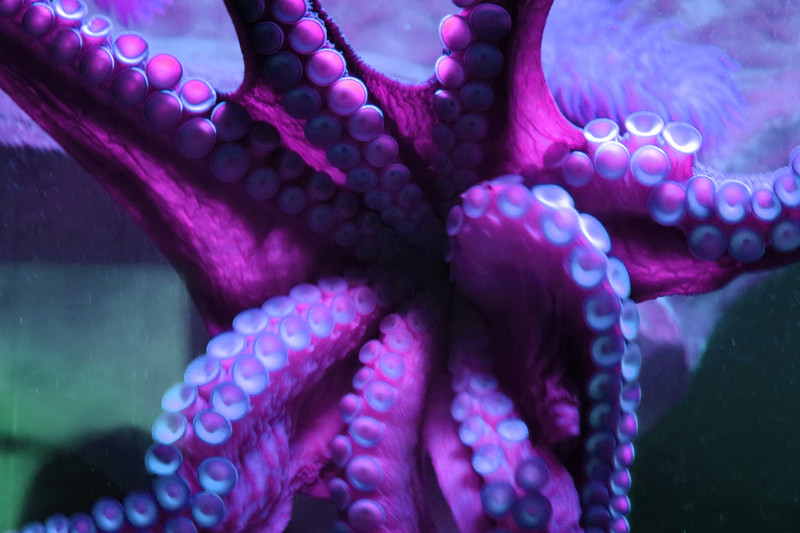 This lesson covers the wonderful world of spineless creatures—invertebrates. Invertebrates are animals without backbones. There are many different types of invertebrates: from starfish to bees to worms to sea angels!
This lesson covers the wonderful world of spineless creatures—invertebrates. Invertebrates are animals without backbones. There are many different types of invertebrates: from starfish to bees to worms to sea angels!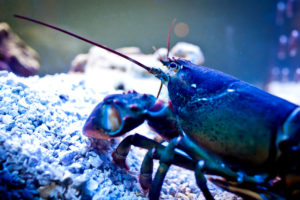 Arthropods, or organisms in the phylum arthropoda, are organisms with segmented bodies and appendages on at least one segment. Arthropods are covered my hard external skeletons. When they grow they shed these skeletons in a process called molting.
Arthropods, or organisms in the phylum arthropoda, are organisms with segmented bodies and appendages on at least one segment. Arthropods are covered my hard external skeletons. When they grow they shed these skeletons in a process called molting.
